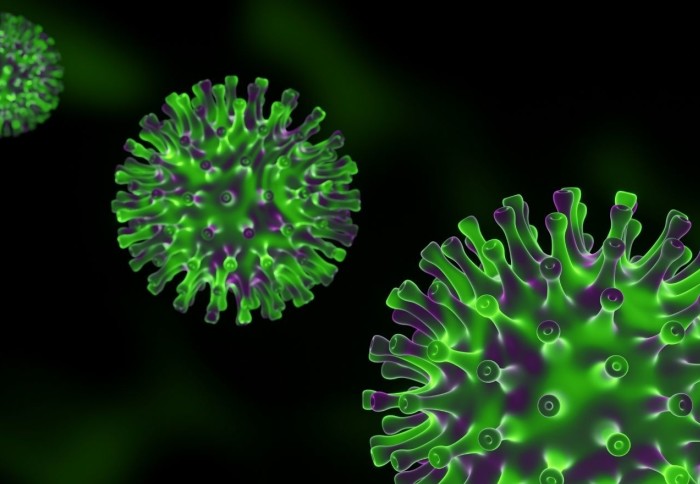Practice Review All (Mainly Last 3) Practice Finals All but Mainly Last All in Class Assignments


The Omicron variant largely evades immunity from by infection or two vaccine doses co-ordinate to the latest Royal modelling.
The new report (Report 49) from the Regal College London COVID-19 response team estimates that the risk of reinfection with the Omicron variant is five.iv times greater than that of the Delta variant. This implies that the protection against reinfection by Omicron afforded past past infection may exist equally low equally 19%.
Researchers estimate the growth and allowed escape of the Omicron variant in England. They used data from the UKHSA and NHS for all PCR-confirmed SARS-CoV-ii cases in England who had taken a COVID test between November 29th and December 11th 2021.
This level of allowed evasion ways that Omicron poses a major, imminent threat to public wellness. Prof Neil Ferguson
The report includes people identified every bit having Omicron infection due to an South factor target failure (SGTF), as well as people with genotype data that confirmed Omicron infection. Overall, 196,463 people without South gene target failure (likely to be infected with another variant) and 11,329 cases with it (likely to exist infected with Omicron) were included in the SGTF analysis, too equally 122,063 Delta and 1,846 Omicron cases in the genotype analysis.
Growth of Omicron
Firstly, the study looks at factors associated with testing positive for Omicron compared to non-Omicron (mostly Delta) cases. The results suggest that the proportion of Omicron among all COVID cases was doubling every 2 days up to Dec 11th, estimated from both S-gene Target Failure and genotype data. Based on these results they estimate that the reproduction number (R) of Omicron was to a higher place 3 over the period studied.
The distribution of Omicron by age, region and ethnicity currently differs markedly from Delta, with 18–29-yr-olds, residents in the London region, and those of African ethnicity having significantly higher rates of infection with Omicron relative to Delta. London is substantially ahead of other English regions in Omicron frequency.
Omicron transmission is not even so uniformly distributed across the population. Even so, the researchers note that given its immune evasion, the age distribution of Omicron infection in the coming weeks may keep to differ from that of Delta.
The study finds no evidence of Omicron having lower severity than Delta, judged by either the proportion of people testing positive who written report symptoms, or past the proportion of cases seeking infirmary care afterwards infection. Still, hospitalisation data remains very limited at this time.
Reinfection rates
To assess the impact of Omicron on reinfection rates the researchers used genotype data, since even prior to Omicron, reinfection was correlated with negative S gene Target Failure data, likely due to random PCR target failure acquired past the lower viral loads associated with reinfections.
Decision-making for vaccine status, historic period, sex, ethnicity, asymptomatic status, region and specimen date, Omicron was associated with a 5.xl (95% CI: 4.38-six.63) fold college risk of reinfection compared with Delta. To put this into context, in the pre-Omicron era, the United kingdom "SIREN" study of COVID infection in healthcare workers estimated that prior infection afforded 85% protection confronting a second COVID infection over vi months. The reinfection hazard estimated in the electric current written report suggests this protection has fallen to xix% (95%CI: 0-27%) against an Omicron infection.
Vaccine effectiveness against Omicron
The researchers constitute a significantly increased risk of developing a symptomatic Omicron case compared to Delta for those who were two or more weeks by their second vaccine dose, and two or more weeks past their booster dose (for AstraZeneca and Pfizer vaccines).
Depending on the estimates used for vaccine effectiveness against symptomatic infection from the Delta variant, this translates into vaccine effectiveness estimates against symptomatic Omicron infection of between 0% and 20% afterwards two doses, and between 55% and eighty% after a booster dose. Like estimates were obtained using genotype data, albeit with greater uncertainty.
Prof Neil Ferguson from Imperial College London said: "This report provides further show of the very substantial extent to which Omicron can evade prior immunity given by both infection or vaccination. This level of immune evasion means that Omicron poses a major, imminent threat to public health."
Prof Azra Ghani from Imperial College London said: "Quantifying reinfection chance and vaccine effectiveness confronting Omicron is essential for modelling the likely future trajectory of the Omicron wave and the potential bear on of vaccination and other public wellness interventions."
The work, which is not yet peer-reviewed, is presented in the latest report from the WHO Collaborating Centre for Communicable diseases Modelling within the MRC Middle for Global Communicable diseases Assay, Jameel Institute, Majestic College London.
Since the emergence of the new coronavirus (COVID-19) in Dec 2019, the Imperial College COVID-19 Response Team has adopted a policy of immediately sharing enquiry findings on the developing pandemic.
-
Read the full report 'Written report 49 - Growth, population distribution and allowed escape of Omicron in England'
Source: https://www.imperial.ac.uk/news/232698/omicron-largely-evades-immunity-from-past/
0 Response to "Practice Review All (Mainly Last 3) Practice Finals All but Mainly Last All in Class Assignments"
Postar um comentário